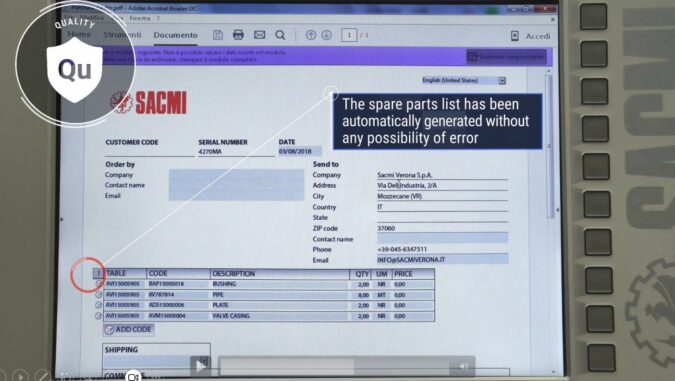How do you measure the efficiency of a spare parts service? Quick and punctual? Yes, but it is even more effective if, before that, the customer is given the right tools to identify immediately and independently the type of action required automatically generating an order and minimizing the risk of inefficiencies which can be caused by human error.
Sacmi is responding to this challenge with its interactive spare parts service now available on all the latest generation Sacmi high pressure casting solutions. The user simply must access the machine HMI interface and select the icon showing the required spare part. By clicking on the icon, the system automatically generates the relevant spare part list, i.e., an actual order which can be downloaded onto a flash drive, printed out or sent by email.
For complex configurations (for example, cells where several machines, robots, etc., are working) it is also now possible to access the cell layout on the interface. The layout is also interactive and can be used to identify quickly and with certainty the machine of interest and part required.
Contrary to the traditional approach, this interactive service not only allows the user to access machine specifications remotely but makes available directly on the machine all the features necessary to identify the spare part and generate the order.
All the same advantages are true also for technical documentation and user manuals, managing of fault signals and maintenance schedules. In this case too, the operator can use contextual manuals on the HMI interface to access direct links between the production stage (or critical area) and the fault diagnostics available in the manual.
If necessary, again using the HMI interface, it is possible to activate a remote assistance service, where a Sacmi operator guides the customer step by step to resolve the problem.
Zero paperwork, minimum risk of error; these are just some of the benefits of this system which results in a reduction of the average problem-solving time (MTTR, mean time to repair) but also significantly decreases the number of critical issues for which an external technician must come into action.
This adds up to a revolution in the running of the machines, thanks to the availability of graphic layouts to help identify the individual parts of the machine, thus making both training and the work of the operators easier.

